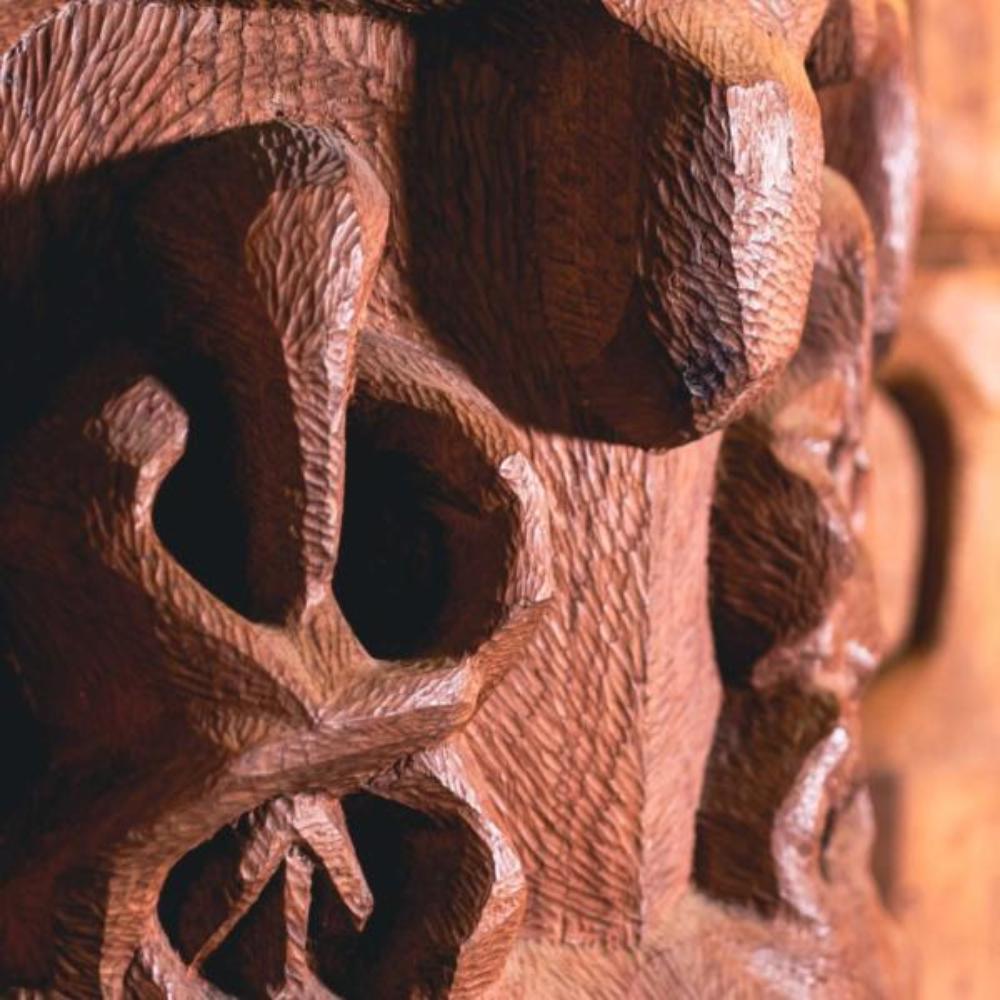More than a study community
After the burning of the Goetheanum, Rudolf Steiner would consider a second building only if there was a change within the Anthroposophical Society. In early 1923 he repeatedly travelled to Stuttgart (DE), the then headquarters of the Anthroposophical Society, to discuss the crisis of the anthroposophical community with those in charge.
The Society had been unable to protect the building from attacks because it was itself not in a good state. This should and had to change within a short period of time. ‘Rebuilding only makes sense if it is carried by a confident, dutiful and strong Anthroposophical Society.’ [1]
In January and February 1923, Rudolf Steiner spent days and nights in conversation in Stuttgart, discussing many of the Society’s internal problems. According to his analysis it was, among other things, the various anthroposophical foundations that had drained the Society of energy since 1919. Rudolf Steiner wholeheartedly supported the social threefolding movement, the founding of the Waldorf School, the opening of the first anthroposophical hospitals and the work of the Christian Community; but he was missing those in the Anthroposophical Society who since those foundations looked primarily after their new institutions and less after the Society.
A Society aware of its task and of the world
There is no doubt that Rudolf Steiner continued to see the Society as a vessel of Anthroposophy and as the starting and rallying point for all anthroposophical initiatives, as the pillar of the whole common cause. But the Society had evolved into a branch and study community that could not keep up with the active developments in the different spheres of life. For the energetic, mostly younger, members who had joined numerously after the end of the World War, the Society increasingly lost its attraction. Rudolf Steiner said it was about to become an ‘obstacle’ preventing Anthroposophy from becoming effective in the world, an association with ‘sectarian’ tendencies that did nothing for the reputation of Anthroposophy.
The foundations themselves, on the other hand, were in danger of losing their spiritual substance and depth in the medium-term if they lost their connection with the centre of Anthroposophy. In more positive terms, Rudolf Steiner called for a restructuring of the Anthroposophical Society so it would be aware of its tasks and of the world and make the individual foundations a common concern. The individual institutions would, however, retain their independence.
Making scientific work possible
Many more topics were discussed in the Stuttgart crisis meetings of January and February 1923. Rudolf Steiner expected the anthroposophical research institutes and scientists to work much more intensively on the projects he had developed in his specialist courses. He also wanted to see more commitment in the Society to enabling the scientific work and to making its findings public. He aimed at a constructive relationship with academic science (rather than mere polemic exchanges), but he also demanded recognition of the scientific work conducted by anthroposophists within the Society, rather than the ‘immensely apathetic’ and ‘blasé’ reception this work had met with so far. [2] The members of the Anthroposophical Society should learn to recognize human achievements.
Again and again he emphasized that Anthroposophy was not the property of a marginal elite but that it was ‘universally human’. [3] People had to learn to see ‘the thriving of the anthroposophical cause as a contemporary cultural matter’ [4] – and finally build up a society that was equal to these requirements.
The Anthroposophical Society was to take on tasks that would demand public respect. It should be interested in the world and its problems and try to contribute to their solutions. In order to achieve this, the Anthroposophical Society had to represent Anthroposophy undogmatically but without self-denying compromises, ‘courageously out of its innermost essence.’ [5] The ‘sources of anthroposophical life’ should be able to flow anew [6] and Anthroposophy should be increasingly experienced as a living being or as an ‘invisible individual’ for which one felt responsible in every moment of one’s life. [7] Members should awaken to ‘this invisible person’ and to the You of those they met within the Anthroposophical Society, because they, too, felt connected to the essence of Anthroposophy. Rudolf Steiner said that the future of the Anthroposophical Society and movement depended on this ‘awakening’ to the essence of Anthroposophy, to the You and We of the other anthroposophists and to the burning tasks in the world.
World Society and Goetheanum
After the attempted restructuring of the Anthroposophical Society in Germany, which was not entirely successful, Rudolf Steiner promoted the development of other ‘autonomous societies’ in many countries. The Anthroposophical Society’s centre should no longer be Germany, but it was to be a global society with the Goetheanum in Dornach and the School of Spiritual Science as its focal point. It was for this new ‘international’ and ‘general’ World Society, which was founded at Christmas 1923, that he created the second building. | Peter Selg, Goetheanum
Titelbild: Model of the First Goetheanum (detail). Foto: Xue Li.
The next contribution about the ‘autonomous Country Societies’ and the World Society will be published in Anthroposophy Worldwide 4/2023.
Web General Anthroposophical Society
Footnotes
[1] GA 257, Lecture of 23 January 1923, 1989, p. 15
[2] GA 259, lecture of 22 April 1923, 1991, p. 498
[3] GA 257, lecture of 23 January 1923, 1989, p. 17
[4] GA 259, lecture of 6 January 1923, 1991, p. 75
[5] GA 258, lecture of 16 June 1923, 1981, p. 141
[6] GA 257, lecture of 22 February 1923, 1989, p. 102
[7] GA 258, lecture of 16 June 1923, 1981, p. 138
[translator’s note: page numbers refer to German editions]

